
Film Review: ‘Journey to Space’
An informative and inspiring look at past and future frontiers in space travel.
By Justin Chang
Justin Chang
- Film Review: ‘A Hologram for the King’ 8 years ago
- Cannes: A Look at the Official Selection, by the Numbers 8 years ago
- Film Review: ‘Captain America: Civil War’ 8 years ago

Eyes will be duly popped and imaginations stirred by “Journey to Space,” a valedictory tribute to NASA’s past accomplishments that offers a sneak preview of the agency’s exciting next frontier. Balancing rich footage from previous shuttle missions with a fascinating survey of forthcoming innovations (including but not limited to tools that will enable a human landing on Mars in the next 25 years), writer-director Mark Krenzien’s informative and inspiring documentary has grossed more than $10 million since its February release, and should continue to benefit from a resurgence of public interest in space travel — aided in no small part by “The Martian’s” hit status — as it makes its way along the giant-screen circuit.
A famous opening quote from Carl Sagan — “We began as wanderers, and are wanderers still” — sets an appropriate tone of limitless possibility for a picture that suggests humankind will never run out of new worlds to explore. But before it peers ahead into the future, “Journey to Space” offers a fond look backward with a sort of cinematic obituary for the 30-year space shuttle program (1981-2011), complete with shots of the shuttle Endeavour being flown to its final destination at the California Science Center (requiring some tricky maneuvering through the busy streets of Los Angeles). With its 42-minute running time, the film can only skim the surface of the program’s accomplishments, including the 40-plus flights it took to construct the Intl. Space Station and the various missions to repair the Hubble Telescope, the subject of 2010’s excellent Imax doc “Hubble 3D.”
Older audiences who have seen that film and others, including “Space Station” (2002), will be familiar with the sort of “Look Ma, no gravity!” archival footage presented here, in which astronauts from different flights are shown experiencing the pleasures and challenges of weightlessness (kids will have fun grasping at lollipops floating outward from the screen during one of many goofy astronaut hangouts). The film emphasizes the international camaraderie that enabled U.S. space shuttles to dock with the Russian station Mir in the ’90s, glossing over the many difficulties and hazards of post-Cold War space collaboration in service of a general spirit of teamwork and optimism that, it’s implied, will drive us toward ever richer and more surprising vistas to come.
Popular on Variety
We get a tantalizing look at those vistas in the film’s second half, as well as the pioneering technologies that will enable astronauts to reach them. These include Orion, a new craft designed for long-term, deep-space exploration, and Olympus, an inflatable habitat that will serve as an expanded work and living area for those on board. Even the smaller innovations, such as a study to improve space-suit mobility (juxtaposed with footage of clunkily clad astronauts falling over on the moon’s surface in 1968), provide an absorbing glimpse into the minds of engineers tasked with visioning and troubleshooting our way forward. The film culminates in much informed speculation about the likelihood of a manned mission to Mars in the 2030s, teased by rover-captured photos of the red planet’s surface.
The appeal of “Journey to Space,” then, is as much a matter of information as presentation. The images of space — a closeup of sun flares, a shot of a nebula — are impressive as advertised but never feel like the main attraction, and the film overall would be not be much less absorbing in 2D, or on a smaller screen. Patrick Stewart handles the narration duties with practiced gravitas.
Reviewed at California Science Center, Los Angeles, Oct. 27, 2015. Running time: 42 MIN.
- Production: (Documentary) A K2 Films and Giant Screen Films release of a Boeing and Toyota presentation. Produced by Don Kempf, Mark Kresser, Andy Wood. Executive producer, Bob Kresser. Co-producer, Ed Capelle.
- Crew: Directed, written by Mark Krenzien. Camera (color, Imax, 3D), Sean MacLeod Phillips; editor, Dale Beldin; music, Cody Westheimer; art director, Richard Bergeron; sound designer/supervising sound editor/re-recording mixer, Brian Eimer; effects supervisor, Rick Gordon; visual effects supervisor, Mathieu Boucher; visual effects executive producer, Mario Couturier; line producer, Neal Allen; associate producer, Andrew Nethery; 3D conversion, James Manke.
- With: Lindsay Aitchison, Serena Aunon, Chris Ferguson. Narrator: Patrick Stewart.
More From Our Brands
‘furiosa’ isn’t just a prequel to ‘fury road’ — it’s a perfect origin-story saga, inside a new long island home that puts an american spin on a classic european country house, pbr goes live with cbs sports, dr. phil’s merit street media, the best loofahs and body scrubbers, according to dermatologists, blue bloods’ midseason finale gave #jamko fans a little anniversary gift, verify it's you, please log in.
AIR & SPACE MAGAZINE
Journey to space 3d opens at imax theaters.
A new big-screen film documents the progress of NASA’s next big adventure.
Diane Tedeschi
/https://tf-cmsv2-smithsonianmag-media.s3.amazonaws.com/filer/46/b5/46b5a6ae-9d21-4d3e-884a-7ff6f339bc94/journey_to_space-still.jpg)
What does a washing machine have to do with the space shuttle? Nothing, really. But in Journey to Space 3D , a new IMAX movie, the two objects share some unexpected screen time when Endeavour , a space shuttle orbiter, rolls past a laundromat on its way to permanent display at the California Science Center in Los Angeles.
The film, narrated by actor Patrick Stewart of Star Trek fame, examines the challenges of sending humans into deep space—specifically a round-trip voyage to Mars—but not before showing lots of love for NASA’s space shuttle program, which ended in 2012.
Watching a shuttle launch was an exhilarating, humbling experience—all thunderous noise and harnessing of explosive energy. Journey to Space features footage from four shuttle launches, filmed at night and during the day. The camera’s point of view makes us feel like we are standing inches away from the shuttle launch stack (orbiter, fuel tank, and two solid-rocket boosters). We see the sustained violent shaking that the vehicle and crew experienced at liftoff. And after the boosters ignite during the final launch of Atlantis , the sudden imbalance of forces acting on the stack causes the orbiter to list slightly—but perceptibly—to one side.
The film seems determined to show off the shuttle’s sculptural beauty, and shots of an orbiter barreling in for a landing at 235 mph and perched atop a 747 during a farewell flight over Washington, D.C. don’t disappoint.
But as cool as the shuttle was, it was never going to get us to Mars. What will get us there is NASA’s Orion, and the second half of the film shows the space agency's new vehicle being tested at Kennedy Space Center in Florida.
“There is no 911 in space,” says Serena Aunon, an astronaut working on Orion development, of the need for crew self-sufficiency. And there won’t be much privacy either. The living quarters inside Orion are so cramped that the four-person crew making the first trip to Mars will move to Olympus, an inflatable habitat connected to the Orion capsule. There the crew can sleep, exercise, and relax on the six-month, one-way trip.
Journey to Space closes with a computer-generated simulated Mars landing. And when simulation becomes reality, we will have satisfied the long-standing desire to set foot on the Red Planet. “But even that won’t be enough,” says Stewart of humankind’s wanderlust.
He’s right.
Journey to Space 3D opens at the National Air and Space Museum’s Lockheed Martin IMAX Theater on March 6. Tickets are available at the theater box office and online at www.si.edu/imax .
Get the latest stories in your inbox every weekday.
Diane Tedeschi | READ MORE
Diane Tedeschi is a Senior Associate Editor at Air & Space.

BUY TICKETS
Journey To Space 3D
Rating: nr / running time: 45 min..
August 15, 2021 - December 31, 2024
Showtimes coming soon!
Boldy go where no one has ever gone before.
In the past half century, humans have punched through the stratosphere, walked on the moon, and lived continuously in orbit. In the coming decades, our unquenchable curiosity will take our species beyond the cradle of Earth to touch the face of another world.
NASA’s next era will be its greatest yet. That is the clear “roadmap” painted by Journey To Space . By using extensive interviews with astronauts Chris Ferguson (Commander of the final shuttle mission) and Serena Aunon (a new astronaut chosen for future flights), as well as a brilliant narration by film and television legend Sir Patrick Stewart, Journey To Space gives a sweeping overview of past space accomplishments, current activities and future plans.
Strap in for the next giant leap. Next stop...Mars!
Documentary Movie Ticket Pricing
Adult * (ages 18-54) $9.50
Junior * (3-17) $8.00
Senior/Military $8.00
* Whitaker Center Members save $2 per ticket
Watch the trailer below!

DON'T MISS OUT
Sign up for our email newsletters and be the first to know about whitaker center events all year long.
THE MUSEUM WILL BE CLOSED ON TUESDAY, SEPTEMBER 3.
In an abundance of caution, the Phillip and Patricia Frost Museum of Science has decided to suspend museum operations starting Tuesday, September 3 , in order ensure the safety of our visitors, staff and animals. Please monitor our website and social channels for all updates regarding the museum.
- Exhibitions
- Journey to Space "> Journey to Space

- Journey to Space - https://www.frostscience.org/exhibition/journey-to-space/" target="_blank" title="Tweet this!">
- Journey to Space " target="_blank" title="Share on Facebook.">
Journey to Space
Opening May 25. Come explore the most astounding aspects of life in space.
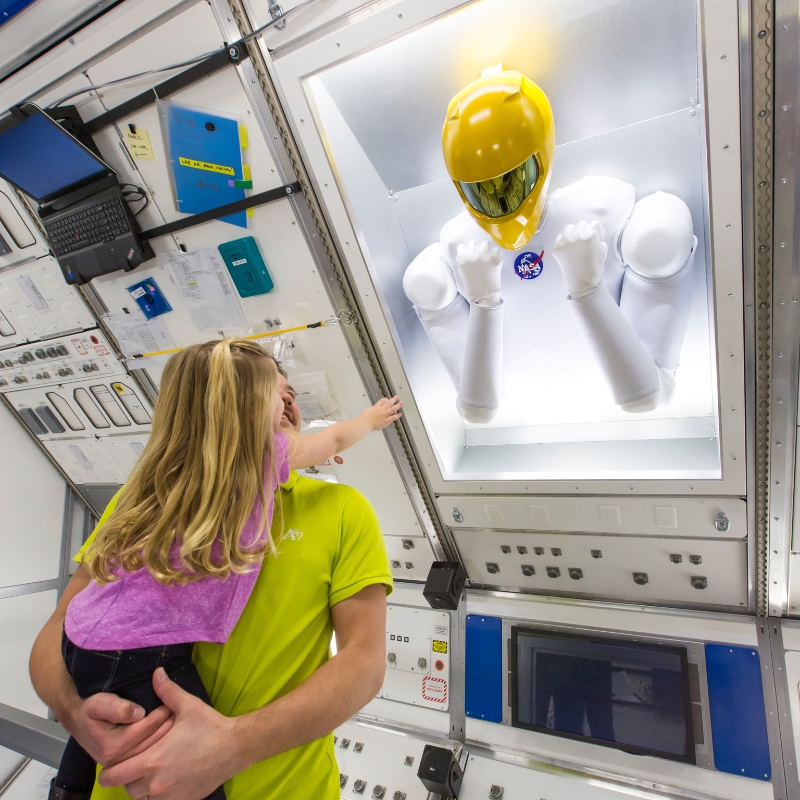
Members see it first, for free! In addition to other amazing benefits, Frost Science members get to see Journey to Space first! Members are invited to an exclusive sneak preview of the exhibition on Friday, May 24. Become a Member today .
Do you have what it takes to survive in space?
In Journey to Space, you’ll get a hands-on, climb-aboard experience of what it takes to live and work in space. Using interactive exhibits and authentic artifacts , Journey to Space immerses you in the extraordinary conditions of human space travel, including the very real dangers that astronauts face during their missions above Earth as well as the unique challenges and rewards of life on board the International Space Station (ISS).
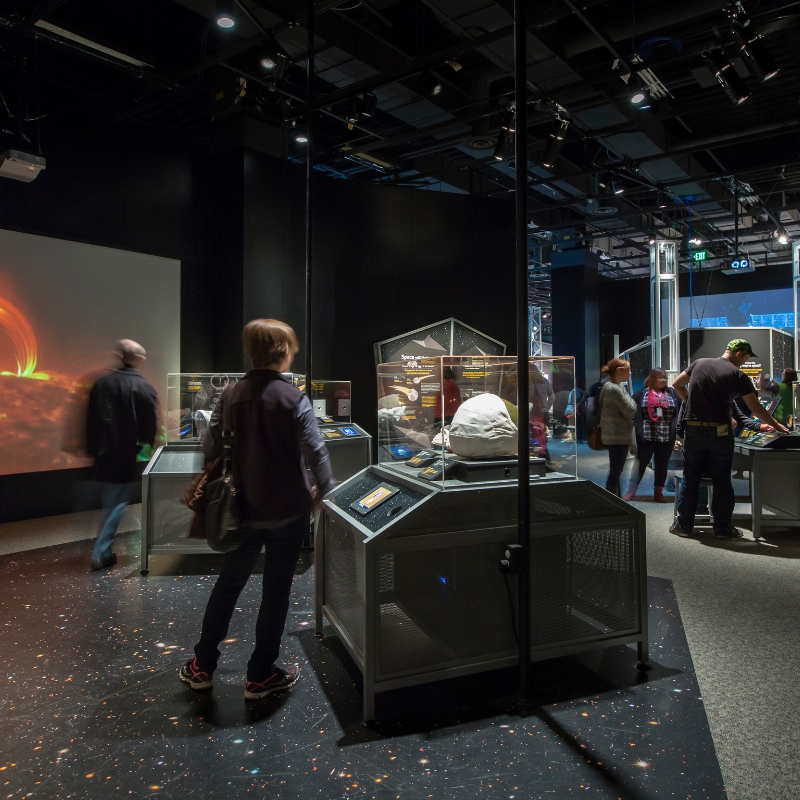
As you navigate through the exhibition, you’ll learn about weightlessness and the challenges it presents to living in space long-term while experiencing the sights, sounds and smells you might find aboard an orbiting space station! Discover how astronauts eat, sleep, and even go to the bathroom in space as you explore. You’ll also get a look at all the ways in which the forbidding environment of space can kill the humans who explore it.
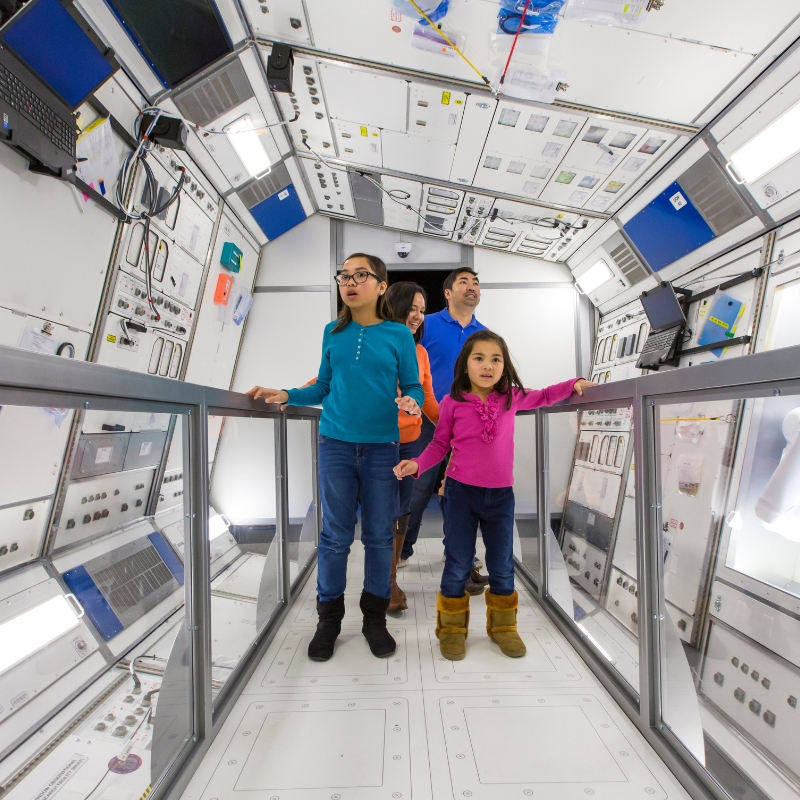
You’ll experience firsthand the challenges of working in space – from operating a robotic arm to managing the limited power supply available to keep life support systems running to discovering why working in a space glove is so difficult. Your adventure through Journey to Space culminates in a trip through a full-scale, climb-aboard mock-up of the Destiny Lab, the primary research facility for U.S. payloads on the ISS. With its rotating mechanism, the Destiny Lab* will give you the sensation you’re floating as you get a virtual tour of the lab from astronauts who have worked there.
Journey to Space will be on view from Saturday, May 25, 2024, through Sunday, October 6, 2024, inside the Hsiao Family Special Exhibition Gallery on the first floor of the museum. Admission to Journey to Space is included with all museum admission tickets. Journey to Space is presented by the Science Museum of Minnesota and the California Science Center , with support from NASA .
*Summer groups will be allowed entry to the Journey to Space special exhibition. However, groups will not be allowed admittance to the rotating Destiny Lab inside the exhibition due to the sensitivity of the experience.

Did You Know?
Where space meets real estate.
The International Space Station (ISS) is as big as a football field—end zones included. But on the inside, it’s about the size of a five-bedroom house.
Journey to Space Level 1
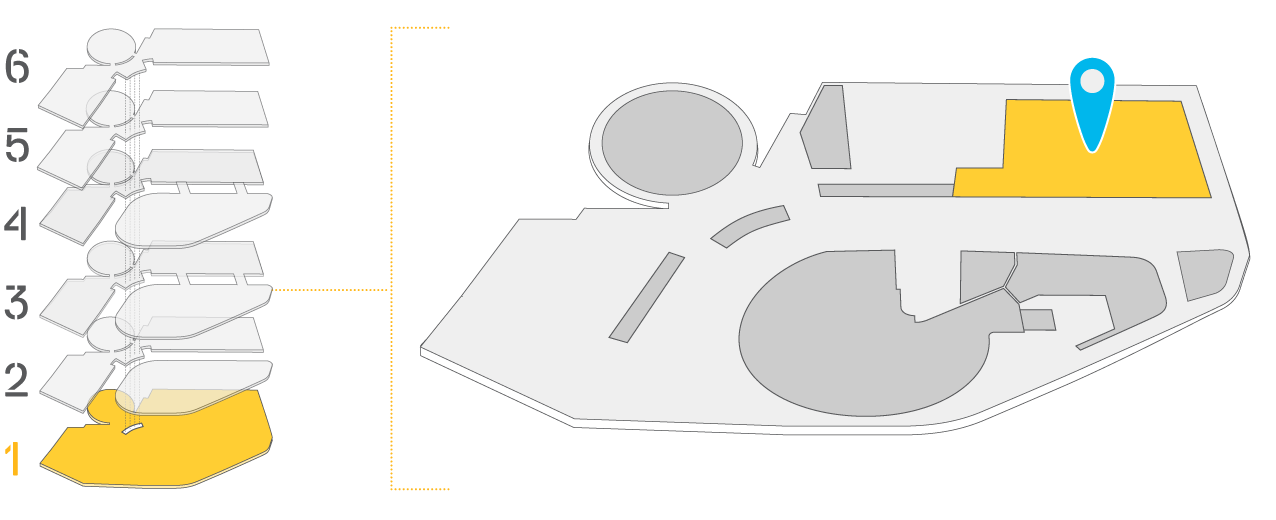

- Movies & TV
- Featured Categories
- Documentary

Enjoy fast, free delivery, exclusive deals, and award-winning movies & TV shows with Prime Try Prime and start saving today with fast, free delivery
Amazon Prime includes:
Fast, FREE Delivery is available to Prime members. To join, select "Try Amazon Prime and start saving today with Fast, FREE Delivery" below the Add to Cart button.
- Cardmembers earn 5% Back at Amazon.com with a Prime Credit Card.
- Unlimited Free Two-Day Delivery
- Streaming of thousands of movies and TV shows with limited ads on Prime Video.
- A Kindle book to borrow for free each month - with no due dates
- Listen to over 2 million songs and hundreds of playlists
- Unlimited photo storage with anywhere access
Important: Your credit card will NOT be charged when you start your free trial or if you cancel during the trial period. If you're happy with Amazon Prime, do nothing. At the end of the free trial, your membership will automatically upgrade to a monthly membership.
Buy new: #buybox .a-accordion .a-accordion-active .a-price[data-a-size=l].reinventPriceAccordionT2 .a-price-whole { font-size: 28px !important; } #buybox .a-accordion .a-accordion-active .a-price[data-a-size=l].reinventPriceAccordionT2 .a-price-fraction, #buybox .a-accordion .a-accordion-active .a-price[data-a-size=l].reinventPriceAccordionT2 .a-price-symbol { top: -0.75em; font-size: 13px; } $14.27 $ 14 . 27 FREE delivery Friday, May 24 on orders shipped by Amazon over $35 Ships from: Amazon.com Sold by: Amazon.com
Return this item for free.
Free returns are available for the shipping address you chose. You can return the item for any reason in new and unused condition: no shipping charges
- Go to your orders and start the return
- Select the return method
Save with Used - Like New #buybox .a-accordion .a-accordion-active .a-price[data-a-size=l].reinventPriceAccordionT2 .a-price-whole { font-size: 28px !important; } #buybox .a-accordion .a-accordion-active .a-price[data-a-size=l].reinventPriceAccordionT2 .a-price-fraction, #buybox .a-accordion .a-accordion-active .a-price[data-a-size=l].reinventPriceAccordionT2 .a-price-symbol { top: -0.75em; font-size: 13px; } $12.84 $ 12 . 84 FREE delivery Friday, May 24 on orders shipped by Amazon over $35 Ships from: Amazon Sold by: Green 2 Green
Image unavailable.

- Sorry, this item is not available in
- Image not available
- To view this video download Flash Player

Journey to Space - 4K UHD + 3D Blu-ray + Blu-ray
- Prime Video $4.99 — $15.99
- Blu-ray $9.25
Purchase options and add-ons
Frequently bought together.

Similar items that may deliver to you quickly

From the manufacturer

For almost 20 years, Shout! Factory has redefined what it means to be an entertainment company for fans, by fans. Through its beginnings lovingly releasing and reviving beloved cult films and classic TV series, Shout! cultivated an uncanny ability to rediscover great content and applied these skills to producing and distributing fan-driven new releases that set the bar for independent entertainment. Shout! Factory's extensive experience in a diverse array of genres has led to the launch of several well-respected properties, including Shout! Studios, Scream Factory, Mystery Science Theater 3000 , Shout Kids, Shout Select and the streaming service Shout! Factory TV. Capitalizing on both traditional and emerging digital platforms, Shout! Factory is a media company devoted to producing, uncovering, preserving and revitalizing the very best of pop culture.
Product Description
Special Features Include:
-Behind-The-Scenes Footage -4K Photo Gallery -4K Trailers
Just add this one to your collection, even if you don’t yet have 4K capability. For those with 4K, pop it in your player and be amazed. --Home Theater Forum, May 2016 Early adopters will find plenty to amaze themselves (and their friends and relatives) with here since the technical merits are so outstanding. Highly recommended. --Bluray.com, May 2016 Shout! Factory knocked it out of the park with their first 4K disc. Kudos for including three formats (4K, 3D Blu-ray, and 2D Blu-ray) in this set, as well as featuring all of the extras in both 4K and 1080p. While the documentary is interesting for fans of space exploration, the video quality is excellent and the images are spectacular. It gets a very strong recommendation --DVD Talk, May 2016
Product details
- Aspect Ratio : 1.78:1
- Is Discontinued By Manufacturer : No
- MPAA rating : NR (Not Rated)
- Product Dimensions : 0.7 x 7.5 x 5.4 inches; 3.17 ounces
- Item model number : 35375001
- Director : Mark Krenzien
- Media Format : 4K
- Run time : 45 minutes
- Release date : June 7, 2016
- Subtitles: : English
- Producers : Andy Wood, Bob Kresser, Don Kempf, Mark Kresser
- Studio : SHOUT! FACTORY
- ASIN : B01CH6SA9M
- Writers : Mark Krenzien
- Country of Origin : USA
- Number of discs : 2
- #20 in Special Interests (Movies & TV)
- #38 in Documentary (Movies & TV)
Customer reviews
Customer Reviews, including Product Star Ratings help customers to learn more about the product and decide whether it is the right product for them.
To calculate the overall star rating and percentage breakdown by star, we don’t use a simple average. Instead, our system considers things like how recent a review is and if the reviewer bought the item on Amazon. It also analyzed reviews to verify trustworthiness.
Reviews with images

- Sort reviews by Top reviews Most recent Top reviews
Top reviews from the United States
There was a problem filtering reviews right now. please try again later..
Top reviews from other countries
- Amazon Newsletter
- About Amazon
- Accessibility
- Sustainability
- Press Center
- Investor Relations
- Amazon Devices
- Amazon Science
- Sell on Amazon
- Sell apps on Amazon
- Supply to Amazon
- Protect & Build Your Brand
- Become an Affiliate
- Become a Delivery Driver
- Start a Package Delivery Business
- Advertise Your Products
- Self-Publish with Us
- Become an Amazon Hub Partner
- › See More Ways to Make Money
- Amazon Visa
- Amazon Store Card
- Amazon Secured Card
- Amazon Business Card
- Shop with Points
- Credit Card Marketplace
- Reload Your Balance
- Amazon Currency Converter
- Your Account
- Your Orders
- Shipping Rates & Policies
- Amazon Prime
- Returns & Replacements
- Manage Your Content and Devices
- Recalls and Product Safety Alerts
- Conditions of Use
- Privacy Notice
- Consumer Health Data Privacy Disclosure
- Your Ads Privacy Choices
Our hours are subject to change on a daily basis based on special events and exhibition closures. Please check our Visitor Information page . Last entry is one hour prior to closing.
Mon-Fri: 10:00am-5:00pm
Sat, Sun, and Holidays: 10:00am-6:00pm
The Space Shuttle Pavilion will be closed due to exhibition planning from Tuesday, September 3 through Friday, September 13

Journey to Space
Take in breathtaking views and discover the bold missions and operations that make up our history in space.
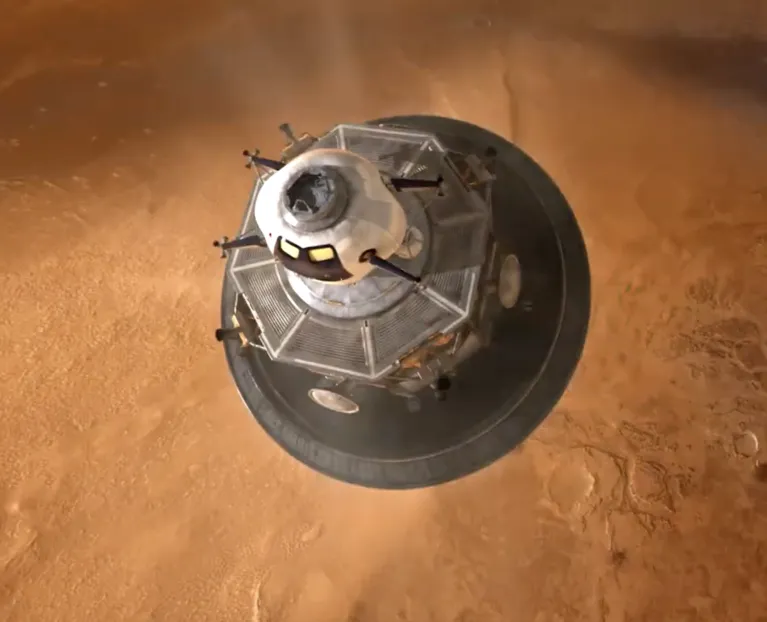
Journey To Space puts into historical context the magnificent contributions made by the Space Shuttle program and its intrepid space pioneers, using breathtaking footage, including unique views of Earth and daring operations in space.
General $11 | Museum Members $5
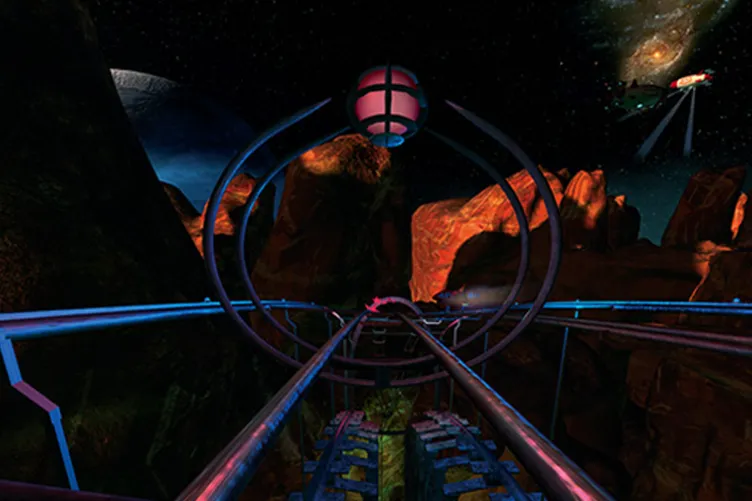
Explore an array of unforgettable experiences.
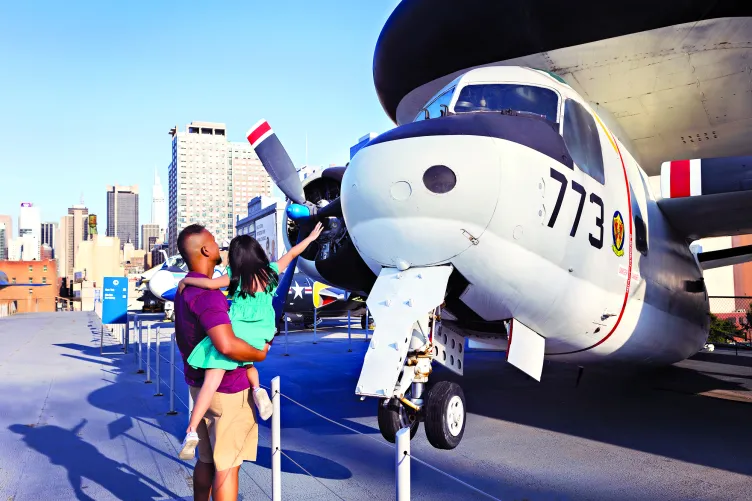
Enjoy exclusive benefits, including free admission. Learn more and join today.

Today ’s Hours 10am-5pm
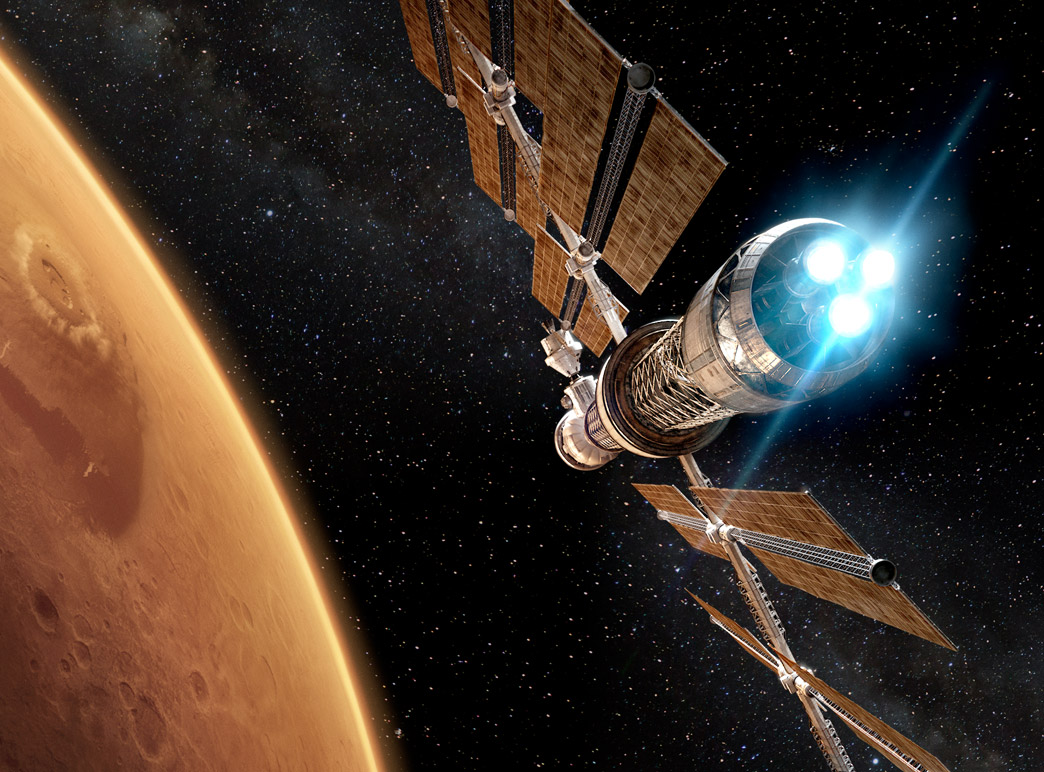
IMAX Showing
Journey to space 3d, celebrate space exploration with this tribute to space research and a look towards future space missions., journey to space 3d schedule.
Week of 5/18 - 5/18
Journey to Space is a celebration of space exploration, a tribute to international cooperation in space research and a vision toward our near-term future beyond Earth’s orbit—a manned mission to Mars within a generation.
The film is a capstone space film, building on the groundbreaking and seminal giant screen space productions of the past 30 years—films that are themselves a part of our proud history in space, beautifully and inspiringly chronicling the Space Shuttle orbiter program, Mir, the International Space Station and the Hubble telescope. Journey to Space recognizes these accolades in the context of our future in space, what we’ve learned, and how to apply this knowledge to deep space missions.
The film takes us on a behind-the-scenes tour of the international effort to send astronauts to Mars within the next 20 years, culminating in a virtual voyage to the Red Planet. Dazzling computer imagery depicts the Orion spacecraft, habitats, landers, vehicles and rockets necessary to achieve interplanetary travel, touchdown and colonization.
Please Rotate Your Device
- Monthly Newsletter
- Upcoming Events/Programs
- Adult Events
James Webb Space Telescope time travels billions of years in amazing 3D visualization (video)
The first data release from the CEERS survey features a region known as the Extended Groth Strip and sends viewers back to shortly after the Big Bang.
A new 3D visualization from the James Webb Space Telescope takes viewers on a journey back in time to just after the Big Bang.
In the video, over 5,000 galaxies can be seen in gorgeous full color and three dimensions. The cosmic journey begins with relatively nearby galaxies located within a few billion light-years of Earth and concludes at Maisie's Galaxy, which at 13.4 billion light-years from Earth is one of the most distant galaxies ever observed by humanity and is seen as it was just around 390 million years after the Big Bang .
As such, this new James Webb Space Telescope (JWST) video doesn't just represent a journey through space but also a trip back through time, rewinding cosmic evolution back to a period when the 13.8 billion-year-old universe was under a third of its current age.
Related: James Webb Space Telescope spots violent collision between neutron stars
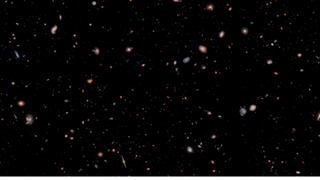
The video is the result of data collected by the Cosmic Evolution Early Release Science Survey (CEERS) and explores a region of space called the Extended Groth Strip. The Extended Groth Strip is located between the constellations of Ursa Major and Boötes and contains around 100,000 galaxies. It was extensively imaged by the Hubble Space Telescope between 2004 and 2005, and the new observations by the JWST build on the groundwork laid by Hubble .
Of particular interest to astronomers in this visualization is Maisie's Galaxy, serving as an example of the kind of early galaxy that the JWST is capable of studying. The powerful space telescope does this by observing the universe in infrared.
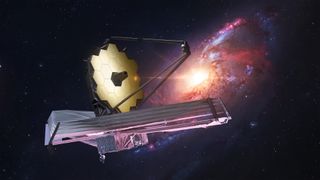
This is useful because as light from early galaxies travels billions of years to reach us, the expansion and the universe and the fact that it loses energy causes its wavelength to "stretch." This results in electromagnetic radiation that left the galaxies shortly after the Big Bang as optical light being " redshifted " down the electromagnetic spectrum past the red end of the visible light spectrum to infrared. The longer the light has traveled, the more extreme the redshift it experiences, making infrared the best way to see early galaxies.
Get the Space.com Newsletter
Breaking space news, the latest updates on rocket launches, skywatching events and more!
"This observatory just opens up this entire period of time for us to study," Rochester Institute of Technology researcher and CEERS investigator Rebecca Larson said in a statement . "We couldn't study galaxies like Maisie's before because we couldn't see them. Now, not only are we able to find them in our images, we're able to find out what they're made of and if they differ from the galaxies that we see close by."
— Saturn's rings look gorgeous in 1st James Webb Space Telescope photo of the gas giant
— James Webb Space Telescope spots violent collision between neutron stars
— James Webb Space Telescope detects most distant active supermassive black hole ever seen
The goal of investigations using the CEERS data will be to learn more about the formation of early galaxies.
"We're used to thinking of galaxies as smoothly growing," Finkelstein concluded. "But maybe these stars are forming like firecrackers. Are these galaxies forming more stars than expected? Are the stars they're making more massive than we expect? These data have given us the information to ask these questions. Now, we need more data to get those answers."
Join our Space Forums to keep talking space on the latest missions, night sky and more! And if you have a news tip, correction or comment, let us know at: [email protected].

Robert Lea is a science journalist in the U.K. whose articles have been published in Physics World, New Scientist, Astronomy Magazine, All About Space, Newsweek and ZME Science. He also writes about science communication for Elsevier and the European Journal of Physics. Rob holds a bachelor of science degree in physics and astronomy from the U.K.’s Open University. Follow him on Twitter @sciencef1rst.
Science and music festival Starmus VII is about to rock Bratislava with a stellar lineup
China's Chang'e 6 mission to collect samples of the far side of the moon enters lunar orbit (video)
Learn how to become an astrobiologist in new issue of NASA's graphic novel series
- tcallaha I think you mean “less than 3% of its current age”, not “less than a third of its current age”. 390/13,800=0.02826 Reply
- View All 1 Comment
Most Popular
- 2 Milky Way's halo is filled with 'magnetic donuts' as wide as 100,000 light-years
- 3 Earth-size planet discovered around cool red dwarf star shares its name with a biscuit
- 4 Supernova-filled galaxy dazzles in new Hubble Telescope image
- 5 NASA details plan to build a levitating robot train on the moon
- Cast & crew
- User reviews
Journey to Space

An unveiling of a new era of unprecedented deep space exploration in dramatic giant screen film format. An unveiling of a new era of unprecedented deep space exploration in dramatic giant screen film format. An unveiling of a new era of unprecedented deep space exploration in dramatic giant screen film format.
- Mark Krenzien
- Lindsay Aitchison
- Serena Aunon-Chancellor
- Chris Ferguson
- 6 User reviews
- 6 Critic reviews

- (as Serena Aunon)

- Featured Tourist
- (uncredited)
- All cast & crew
- Production, box office & more at IMDbPro
More like this

User reviews 6
- ginexmachina
- Mar 23, 2019
- How long is Journey to Space? Powered by Alexa
- March 26, 2015 (Denmark)
- United States
- Official Facebook
- Official Google+
- Viaje al espacio. Próxima parada: Marte
- Giant Screen Films
- Liquid Pictures
- See more company credits at IMDbPro
Technical specs
- Runtime 45 minutes
- Dolby Atmos
Related news
Contribute to this page.

- See more gaps
- Learn more about contributing
More to explore


Recently viewed

New NASA Black Hole Visualization Takes Viewers Beyond the Brink
Ever wonder what happens when you fall into a black hole? Now, thanks to a new, immersive visualization produced on a NASA supercomputer, viewers can plunge into the event horizon, a black hole’s point of no return.
“People often ask about this, and simulating these difficult-to-imagine processes helps me connect the mathematics of relativity to actual consequences in the real universe,” said Jeremy Schnittman, an astrophysicist at NASA’s Goddard Space Flight Center in Greenbelt, Maryland, who created the visualizations. “So I simulated two different scenarios, one where a camera — a stand-in for a daring astronaut — just misses the event horizon and slingshots back out, and one where it crosses the boundary, sealing its fate.”
The visualizations are available in multiple forms. Explainer videos act as sightseeing guides, illuminating the bizarre effects of Einstein’s general theory of relativity. Versions rendered as 360-degree videos let viewers look all around during the trip, while others play as flat all-sky maps.
To create the visualizations, Schnittman teamed up with fellow Goddard scientist Brian Powell and used the Discover supercomputer at the NASA Center for Climate Simulation . The project generated about 10 terabytes of data — equivalent to roughly half of the estimated text content in the Library of Congress — and took about 5 days running on just 0.3% of Discover’s 129,000 processors. The same feat would take more than a decade on a typical laptop.
The destination is a supermassive black hole with 4.3 million times the mass of our Sun, equivalent to the monster located at the center of our Milky Way galaxy.
“If you have the choice, you want to fall into a supermassive black hole,” Schnittman explained. “Stellar-mass black holes, which contain up to about 30 solar masses, possess much smaller event horizons and stronger tidal forces, which can rip apart approaching objects before they get to the horizon.”
This occurs because the gravitational pull on the end of an object nearer the black hole is much stronger than that on the other end. Infalling objects stretch out like noodles, a process astrophysicists call spaghettification .
The simulated black hole’s event horizon spans about 16 million miles (25 million kilometers), or about 17% of the distance from Earth to the Sun. A flat, swirling cloud of hot, glowing gas called an accretion disk surrounds it and serves as a visual reference during the fall. So do glowing structures called photon rings, which form closer to the black hole from light that has orbited it one or more times. A backdrop of the starry sky as seen from Earth completes the scene.
As the camera approaches the black hole, reaching speeds ever closer to that of light itself, the glow from the accretion disk and background stars becomes amplified in much the same way as the sound of an oncoming racecar rises in pitch. Their light appears brighter and whiter when looking into the direction of travel.
The movies begin with the camera located nearly 400 million miles (640 million kilometers) away, with the black hole quickly filling the view. Along the way, the black hole’s disk, photon rings, and the night sky become increasingly distorted — and even form multiple images as their light traverses the increasingly warped space-time.
In real time, the camera takes about 3 hours to fall to the event horizon, executing almost two complete 30-minute orbits along the way. But to anyone observing from afar, it would never quite get there. As space-time becomes ever more distorted closer to the horizon, the image of the camera would slow and then seem to freeze just shy of it. This is why astronomers originally referred to black holes as “frozen stars.”
At the event horizon, even space-time itself flows inward at the speed of light, the cosmic speed limit. Once inside it, both the camera and the space-time in which it's moving rush toward the black hole's center — a one-dimensional point called a singularity , where the laws of physics as we know them cease to operate.
“Once the camera crosses the horizon, its destruction by spaghettification is just 12.8 seconds away,” Schnittman said. From there, it’s only 79,500 miles (128,000 kilometers) to the singularity. This final leg of the voyage is over in the blink of an eye.
In the alternative scenario, the camera orbits close to the event horizon but it never crosses over and escapes to safety. If an astronaut flew a spacecraft on this 6-hour round trip while her colleagues on a mothership remained far from the black hole, she’d return 36 minutes younger than her colleagues. That’s because time passes more slowly near a strong gravitational source and when moving near the speed of light.
“This situation can be even more extreme,” Schnittman noted. “If the black hole were rapidly rotating, like the one shown in the 2014 movie ‘Interstellar,’ she would return many years younger than her shipmates.”
By Francis Reddy NASA’s Goddard Space Flight Center , Greenbelt, Md. Media Contact: Claire Andreoli 301-286-1940 [email protected] NASA’s Goddard Space Flight Center, Greenbelt, Md.
Related Terms
- Astrophysics
- Black Holes
- Galaxies, Stars, & Black Holes
- Galaxies, Stars, & Black Holes Research
- Goddard Space Flight Center
- Supermassive Black Holes
- The Universe
Explore More

Hubble Views Cosmic Dust Lanes

How NASA Tracked the Most Intense Solar Storm in Decades

Discovery Alert: An Earth-sized World and Its Ultra-cool Star
Space Journey 3D
Animated desktop backgrounds of space, get the latest version.
Nov 29, 2013
Space Journey 3D is a pack of animated desktop backgrounds set in space that you can use to create the impression that you're traveling through space on a high-speed intergalactic journey.
These backgrounds will throw you into space through black holes, nebulas, and stars with alien features so that your computer will surprise you with original effects.
Immerse yourself in the universe and go on a fascinating journey each time you work on your computer or the screensaver starts. The different environments included in the pack will rotate on your screen to make sure that you never grow bored.
From the application's options menu, you can change the speed of your journey (try out the maximum setting for a real thrill ride). You can also control the time it takes for the animations to change, making your desktop more dynamic or more static as a result.
These desktop backgrounds are original and totally customizable - try setting them to random, or changing the direction from forward to backwards to find your perfect parameters.
Information about Space Journey 3D 1.38
Rate this app.
Correct program thanks
Similar to Space Journey 3D
Discover desktop apps.
Sign in to uptodown.com with your Google account
Forget about remembering any more passwords! Logging in is fast, easy and secure.

Ariane 6 launches Replicator for 3D printing in open space
E urope's newest rocket soon launches, taking with it many space missions each with a unique objective, destination and team at home, cheering them on. Whether into Earth orbit to look back and study Earth, peer out to deep space or test important new technologies, Ariane 6's first flight will showcase the versatility and flexibility of this impressive, heavy-lift launcher.
The Replicator mission, from Warsaw, Poland, and Berlin, Germany, based startup Orbital Matter, will launch on Ariane 6 to demonstrate a new 3D printing technology in orbit, potentially opening the door to new space structures that wouldn't have been possible otherwise, made using fewer resources.
The name "Replicator" is a homage to the many forms of advanced manufacturing methods in science fiction, capable of making complex products, ready to use: Star Trek's kitchen microwave-like Replicators could synthesize meals on demand; the Von Neumann Probe is a conceptualized spacecraft capable of exponentially self-replicating; and in the Stargate series, Replicators are a highly advanced machine race capable of reproducing themselves indefinitely.
Orbital Matter doesn't plan to churn out burgers or machine-like people, their long-term goal is to become the first construction company in space—one day manufacturing large elements of space infrastructure directly in orbit, on the moon and Mars, while reducing costs and increasing access to space.
Their new method of 3D printing has been developed to work directly in a vacuum and under microgravity, without requiring heat to be generated during manufacturing. As there is no atmosphere to cool down parts via convection cooling, like blowing on a spoonful of hot soup, it takes a long time—months—for parts to cool down just through irradiation (simply waiting for the soup to lose heat). Orbital Matter's process prints without heat, making it much faster to build structures in a vacuum.
3D printing, or "additive manufacturing," was first tested in space on the International Space Station in 2014 and has proven useful for the on-demand manufacturing of tools and spare parts. So far, no 3D printing technology has been shown to work in the significantly harsher exposed conditions outside of the Space Station, in "open" space, limiting its use.
Manufacturing directly in space means large structures could in principle be built with fewer materials, as they don't need to withstand the rigors of launch. This could mean large space-based solar power plants, communication antennas, larger telescopes for science missions and even larger space stations could all be built in orbit.
Such structures could provide real benefits, from making electricity cheaper, greener and more accessible for remote areas to reducing the cost of communication and increasing access to it, furthering our general knowledge of the universe and making space tourism cheaper and more accessible.
Orbital Matter has already demonstrated that their 3D printing technology works in a vacuum on Earth, but with the Ariane 6 first launch, they will perform their first in-space demonstration: their three-unit CubeSat (10x10x30 cm) will print a 50 cm-long beam while at an altitude of 580 km, out of a custom polymer material.
"Thanks to the ESA PUSH opportunity, we're demonstrating our 3D printer in orbit a remarkable 12 months ahead of schedule," says Jakub Stojek, CEO of Orbital Matter. "This is a great example of how European technological independence can be built in space, by fostering rapid prototyping for startups across Europe."
Robert Ihnatisin, Chief Technology Officer at Orbital Matter adds, "Ariane 6 will act as a catalyst for the renewed launch capabilities of Europe, and our experiment during its inaugural flight could help Europe become a leading player in in-space manufacturing, as we demonstrate it is indeed possible to 3D print in exposed space."
Orbital Matter has been assisted throughout the planning and development of their mission by Paris-based launch provider RIDE! space, who took part in ESA's PUSH tender and were selected to organize a contest where the winner would receive end-to-end launch management and procurement of one or several deployers.
RIDE! provides a digital platform to handle end-to-end launch services, from scouting for launch opportunities to assessing performance, price and level of service. Besides the platform, the company offers support with instrument qualification, documentation, transportation, launch integration, promotion and much more.
"We're delighted to be part of European space history with our presence on Ariane 6 maiden launch," explains Valentin Benoit, RIDE! CEO. "The whole team is working hand-to-hand with Orbital Matter to finalize the launch campaign of this ambitious and disruptive 3D printing in space mission. I would like to thank Arianespace, ESA's Space Transportation and CIC teams (Commercialization, Industry and Competitiveness) for their support during launch preparations."
Ariane 6 has been designed for all possible futures. At its core is maximum versatility. It can put any satellite or payload into any orbital path. This is made possible with the new restartable Vinci engine that will power up the Ariane 6 upper stage again and again, stopping and starting to insert missions into any orbit they need to be.
It will save enough fuel for a final burn to deorbit and reenter safely back through Earth's atmosphere, or reorbit into a nearby "graveyard orbit."
Provided by European Space Agency

share this!
May 17, 2024
This article has been reviewed according to Science X's editorial process and policies . Editors have highlighted the following attributes while ensuring the content's credibility:
fact-checked
trusted source
Parents underestimate the privacy risks kids face in virtual reality
by RA Smith, Duke University
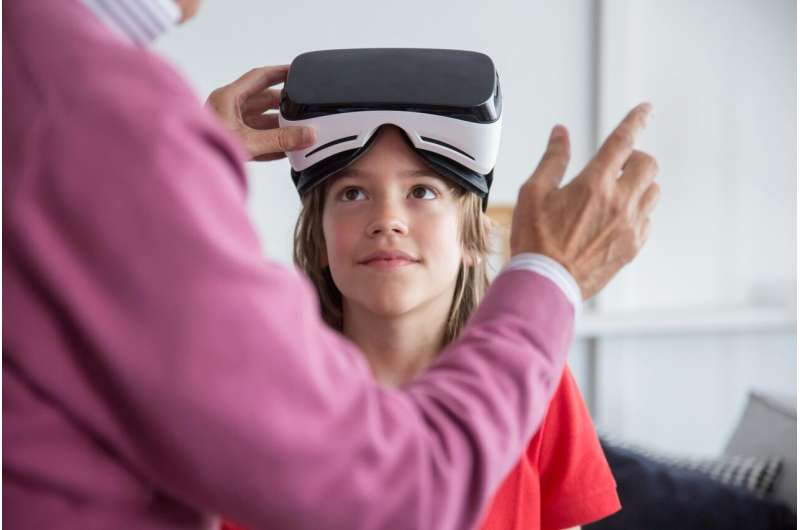
Virtual reality lets kids play 3D games with their friends as avatars, go back in time, even journey to outer space, all without leaving their living rooms.
But while children are immersed in the metaverse, they also face privacy risks that their parents might not recognize, suggests new research posted to the arXiv preprint server.
A survey led by researchers at Duke University and North Carolina State University suggests that when it comes to kids and virtual reality , U.S. parents aren't as concerned as they should be—especially about handing over their kids' personal data to advertisers and big tech.
The researchers polled 20 parents with children between the ages of six and 17 who use VR at home.
When setting ground rules for digital technology, most parents treat VR like other tech such as social media and smartphones, the researchers found. But VR differs from other forms of screen time in important ways, said Duke assistant professor of computer science Pardis Emami-Naeini.
For one, VR devices learn more about their users than websites and apps.
While your child battles virtual dragons or plays simulated mini golf, for example, the cameras and sensors in their VR headset also collect data such as where their eyes are looking, the layout of the room they're playing in, recordings of their voice and other sounds in the home, and their head and hand movements—all of which can be used to infer dozens of other characteristics, including their age, gender, location, ethnicity and disability status.
"Prior research has shown that you can infer a lot of information from people's eye movements, even their political orientation and sexual preferences," Emami-Naeini said.
What's more, VR headsets share the information they collect with third parties such as advertisers for profit, she added.
And yet, most parents surveyed were generally unconcerned about threats to their children's privacy in the virtual world . Indeed, about half said they had never thought about these issues with respect to VR before, arguing that the technology hasn't taken off yet and doesn't have the billions of users that other technologies have.
Instead, other concerns were more top of mind. Because VR goggles work inches from your eyes and block out real-world sights and noises, parents worry their kids could experience eye strain if they wear them for too long, or could hurt themselves because they can't see where they're swinging their arms and legs.
Parents were also wary of the fact that behind the computer graphics is a real-life person their children may not know, and who could potentially be dangerous.
Because they can't easily see what's happening on the screen like they can with other video games or control who their kids interact with, parents said they worried their child might be exposed to harassment, cyberbullying, or inappropriate content as a result of VR gaming.
"When they get on VR, in their head, they're in a safe video game space," one parent said. "They're not thinking, 'oh, that cartoon character could actually be a person who has ulterior motives like a stranger on a street.'"
Few parents in the survey had actually read the privacy policies of the VR devices their children used. And while they could name privacy risks when specifically asked, most parents were more worried about their child sharing too much about themselves with strangers than companies collecting and profiting from their children's data.
"What we saw in this research is many of the parents did not really know how VR works," Emami-Naeini said. "The kids were using VR, but not the parents."
Nearly 1 in 3 American teens has a VR headset of their own. While most VR headsets aren't recommended for children under 13, the families in the study weren't waiting until the 13 age mark. Children as young as 6 were using the devices.
To better protect kids, the researchers say parents should try VR devices for themselves and familiarize themselves with the parental supervision features they offer.
"Designers of VR platforms definitely need to be more transparent about their security and privacy practices too," Emami-Naeini said. "And this information should be presented in a more usable format so that parents understand."
Explore further
Feedback to editors

Q&A: Model disgorgement—the key to fixing AI bias and copyright infringement?
15 hours ago

Sun, sustainability, and silicon: A double dose of solar fuel research
16 hours ago

Floating photovoltaics could limit Africa's future reliance on hydro-generated energy
17 hours ago

Orphan articles: The 'dark matter' of Wikipedia

The tentacles of retracted science reach deep into social media: A simple button could change that
18 hours ago

Researchers find LLMs are easy to manipulate into giving harmful information
19 hours ago

A promising three-terminal diode for wireless communication and optically driven computing
23 hours ago

Scientists develop a soft robot that mimics a spider's leg
May 16, 2024

New research to make digital transactions quantum safe and 20 times faster

AI-powered noise-filtering headphones give users the power to choose what to hear
Related stories.

Research shows VR poses privacy risks for kids—parents aren't as worried as they should be
May 6, 2024

Researchers explore best practices for talking to kids about online privacy
Aug 8, 2023

What your kids want to tell you about social media
Apr 9, 2018

National Poll: 1/3 of children ages 7-9 use social media apps
Oct 18, 2021

National poll: Parents of young children increasingly turn to social media for parenting advice
Nov 20, 2023

Only 1 in 5 parents plan to get COVID vaccine for kids under 5 when available
May 4, 2022
Recommended for you

Managing screen time by making phones slightly more annoying to use
May 14, 2024

Just believing that an AI is helping boosts your performance, study finds
May 13, 2024

Computer scientists discover vulnerability in cloud server hardware used by AMD and Intel chips
May 7, 2024

Turing test study shows humans rate artificial intelligence as more 'moral' than other people
Let us know if there is a problem with our content.
Use this form if you have come across a typo, inaccuracy or would like to send an edit request for the content on this page. For general inquiries, please use our contact form . For general feedback, use the public comments section below (please adhere to guidelines ).
Please select the most appropriate category to facilitate processing of your request
Thank you for taking time to provide your feedback to the editors.
Your feedback is important to us. However, we do not guarantee individual replies due to the high volume of messages.
E-mail the story
Your email address is used only to let the recipient know who sent the email. Neither your address nor the recipient's address will be used for any other purpose. The information you enter will appear in your e-mail message and is not retained by Tech Xplore in any form.
Your Privacy
This site uses cookies to assist with navigation, analyse your use of our services, collect data for ads personalisation and provide content from third parties. By using our site, you acknowledge that you have read and understand our Privacy Policy and Terms of Use .
E-mail newsletter
Secondary Menu
Parents underestimate the privacy risks kids face in virtual reality, may 16, 2024.

DURHAM, N.C. -- Virtual reality lets kids play 3D games with their friends as avatars, go back in time, even journey to outer space, all without leaving their living rooms.
But while children are immersed in the metaverse, they also face privacy risks that their parents might not recognize, new research suggests.
A survey led by researchers at Duke University and North Carolina State University suggests that when it comes to kids and virtual reality, U.S. parents aren’t as concerned as they should be -- especially about handing over their kids’ personal data to advertisers and big tech.
The researchers polled 20 parents with children between the ages of six and 17 who use VR at home.
When setting ground rules for digital technology, most parents treat VR like other tech such as social media and smartphones, the researchers found. But VR differs from other forms of screen time in important ways, said Duke assistant professor of computer science Pardis Emami-Naeini .
For one, VR devices learn more about their users than websites and apps.
While your child battles virtual dragons or plays simulated mini golf, for example, the cameras and sensors in their VR headset also collect data such as where their eyes are looking, the layout of the room they’re playing in, recordings of their voice and other sounds in the home, and their head and hand movements -- all of which can be used to infer dozens of other characteristics , including their age, gender, location, ethnicity and disability status.
“Prior research has shown that you can infer a lot of information from people's eye movements, even their political orientation and sexual preferences ,” Emami-Naeini said.
What’s more, VR headsets share the information they collect with third parties such as advertisers for profit, she added.
And yet, most parents surveyed were generally unconcerned about threats to their children’s privacy in the virtual world. Indeed, about half said they had never thought about these issues with respect to VR before, arguing that the technology hasn’t taken off yet and doesn’t have the billions of users that other technologies have.

Instead, other concerns were more top of mind. Because VR goggles work inches from your eyes and block out real-world sights and noises, parents worry their kids could experience eye strain if they wear them for too long, or could hurt themselves because they can’t see where they’re swinging their arms and legs.
Parents were also wary of the fact that behind the computer graphics is a real-life person their children may not know, and who could potentially be dangerous.
Because they can’t easily see what’s happening on the screen like they can with other video games or control who their kids interact with, parents said they worried their child might be exposed to harassment, cyberbullying, or inappropriate content as a result of VR gaming.
“When they get on VR, in their head, they’re in a safe video game space,” one parent said. “They’re not thinking, ‘oh, that cartoon character could actually be a person who has ulterior motives like a stranger on a street.’”
Few parents in the survey had actually read the privacy policies of the VR devices their children used. And while they could name privacy risks when specifically asked, most parents were more worried about their child sharing too much about themselves with strangers than companies collecting and profiting from their children’s data.
“What we saw in this research is many of the parents did not really know how VR works,” Emami-Naeini said. “The kids were using VR, but not the parents.”
Nearly one in three American teens has a VR headset of their own. While most VR headsets aren’t recommended for children under 13, the families in the study weren’t waiting until the 13 age mark. Children as young as six were using the devices.
To better protect kids, the researchers say parents should try VR devices for themselves and familiarize themselves with the parental supervision features they offer.
“Designers of VR platforms definitely need to be more transparent about their security and privacy practices too,” Emami-Naeini said. “And this information should be presented in a more usable format so that parents understand.”
North Carolina State University assistant professor of computer science Anupam Das and Ph.D. student Abhinaya S B were also authors on this study.
First author Jiaxun “Jessie” Cao of Duke and Duke Kunshan University will present the team’s findings on May 21 at the 45th IEEE Symposium on Security and Privacy in San Francisco.
This work was supported in part by Meta Research Award.
CITATION: “Understanding Parents’ Perceptions and Practices Toward Children’s Security and Privacy in Virtual Reality,” Jiaxun Cao, Abhinaya S B, Anupam Das and Pardis Emami-Naeini. 2024 IEEE Symposium on Security and Privacy, May 20-23, 2024, San Francisco, California. DOI: 10.48550/arXiv.2403.06172
Related Articles

- Dean Gary G. Bennett
- Senior Leadership Team
- National Academy Fellows and Members
- Distinguished Professorships
- Award Winning Teachers
- Bass Fellows
- STEAM @ Duke
- Statement on Diversity & Inclusion
- Department/Program Leadership
- Academic Deans
- Archives Alive Courses
- Cultures & Languages Across the Curriculum
- House Courses
- Languages at Duke
- Transformative Ideas
- Student Career Paths
- Tuition & Financial Aid
- 4 Things to Know about Majors
- Interdepartmental Major
- Certificate Programs
- Fall 2024 First-Year Seminars
- Spring 2024 First-Year Seminars
- Fall 2023 First-Year Seminars
- Spring 2023 First-Year Seminars
- Faculty Guidelines
- Undergraduate Research
- Study Pathways
- Advice for New Students
- The Robert E. Pristo Filmmaking Awards
- Trinity Ambassadors
- How Advising Works
- Policies & Procedures (“T-Reqs”)
- Graduate Programs
- Summer Session
- Arts & Humanities
- Natural Sciences
- Social Sciences
- Annual Fund
- Scholarships, Fellowships & Summer Support
- Endowed Professorships
- Gift Planning
- Alumni Association
- Brodhead Service Award
- 2022-2023 Dean's Emeriti Circle
- 2023-2024 Dean's Emeriti Circle
- Trinity Parents
- Volunteering

IMAGES
VIDEO
COMMENTS
NOW PLAYING—Strap in for the next giant leap in Journey to Space 3D!. Narrated by Actor Patrick Stewart, Journey to Space 3D is an inspiring reflection on the remarkable achievements of NASA's Space Shuttle program, including the assembly and launch of the International Space Station and the deployment of the Hubble Space Telescope. Missions like these have taught us how to live, build, and ...
Journey to Space (also known as Journey to Space 3D) is a 2015 American 3D documentary Adventure film directed by Mark Krenzien. It was presented in collaboration with Boeing and Toyota. It depicts an unveiling of a new era of unprecedented deep space exploration in dramatic giant screen film format.
Discover how NASA's shuttle program has led to its exciting new era of space exploration. Learn about the important role of the International Space Station. ...
Explore the solar system with NASA's Eyes, an interactive web app that lets you simulate the orbits and movements of planets, moons, asteroids, and spacecraft. You can zoom in and out, change the speed and direction of time, and view the solar system from different perspectives. Learn about the missions that explore our cosmic neighborhood and discover the wonders of the sun, Earth, and other ...
Journey To Space 3D. EXHIBIT HOURS Mon - Sat: 10 a.m. - 5 p.m. Sun: Noon - 5 p.m. MUSEUM STORE HOURS Mon - Sat: 11 a.m. - 5 p.m. Sun: Noon - 5 p.m. Purchase Tickets. Narrated by Patrick Stewart. In the past half century, humans have punched through the stratosphere, walked on the moon, and lived continuously in orbit. In the coming ...
Film Review: 'Journey to Space'. Reviewed at California Science Center, Los Angeles, Oct. 27, 2015. Running time: 42 MIN. Production: (Documentary) A K2 Films and Giant Screen Films release of ...
Explore the 3D world of the Solar System. Learn about past and future missions.
Journey to Space (also known as Journey to Space 3D) is a 2015 American 3D documentary Adventure film directed by Mark Krenzien. It is an unveiling of a new ...
He's right. Journey to Space 3D opens at the National Air and Space Museum's Lockheed Martin IMAX Theater on March 6. Tickets are available at the theater box office and online at www.si.edu ...
Journey to Space 3D 2015. Not rated. 42 MIN. prev next. Overview: Releases: Reviews: Cast crew: ... Discover how NASA's shuttle program has led to its exciting new era of space exploration ...
12:20pm. 3:35pm. Discover how NASA's shuttle program has led to its exciting new era of space exploration. Learn about the important role of the International Space Station. Uncover what NASA and the space community are working on, and the challenges they face to carry out bold missions such as capturing asteroids and landing astronauts on Mars.
A giant-screen documentary on NASA's path to Mars, "Journey to Space," has landed on the small screen — with new 4K ultra-HD, Blu-ray and 3D Blu-ray versions out now. The movie is narrated by ...
official trailer for Journey to SpaceThrough visually stunning imagery, and in collaboration with leading space experts, Journey to Space showcases the excit...
Documentary Movie Ticket Pricing. Adult * (ages 18-54) $9.50. Junior * (3-17) $8.00. Senior/Military $8.00. * Whitaker Center Members save $2 per ticket. Presented with Closed Captioning. Watch the trailer below! Whitaker Center located in Harrisburg, PA offers live music, concerts, theater performances, movies, science exhibitions, and ...
Journey to Space will be on view from Saturday, May 25, 2024, through Sunday, October 6, 2024, inside the Hsiao Family Special Exhibition Gallery on the first floor of the museum. Admission to Journey to Space is included with all museum admission tickets.
For more about Journey to Space 4K + 3D and the Journey to Space 4K + 3D Blu-ray release, see Journey to Space 4K + 3D Blu-ray Review published by Jeffrey Kauffman on May 4, 2016 where this Blu ...
Amazon.com: Journey to Space - 4K UHD + 3D Blu-ray + Blu-ray : Patrick Stewart, Mark Krenzien, Andy Wood, Bob Kresser, Don Kempf, Mark Kresser, Mark Krenzien: Movies & TV
3D Films. Journey to Space. Take in breathtaking views and discover the bold missions and operations that make up our history in space. ... Journey To Space puts into historical context the magnificent contributions made by the Space Shuttle program and its intrepid space pioneers, using breathtaking footage, including unique views of Earth and ...
Journey to Space 3D Schedule. Week of 1/1 - 1/1. Journey to Space is a celebration of space exploration, a tribute to international cooperation in space research and a vision toward our near-term future beyond Earth's orbit—a manned mission to Mars within a generation. The film is a capstone space film, building on the groundbreaking and ...
Comments (1) A new 3D visualization from the James Webb Space Telescope takes viewers on a journey back in time to just after the Big Bang. In the video, over 5,000 galaxies can be seen in ...
Journey to Space: Directed by Mark Krenzien. With Lindsay Aitchison, Serena Aunon-Chancellor, Chris Ferguson, Christian Gardner. An unveiling of a new era of unprecedented deep space exploration in dramatic giant screen film format.
Once inside it, both the camera and the space-time in which it's moving rush toward the black hole's center — a one-dimensional point called a singularity, where the laws of physics as we know them cease to operate. "Once the camera crosses the horizon, its destruction by spaghettification is just 12.8 seconds away," Schnittman said. ...
1.38. Nov 29, 2013. Advertisement. Space Journey 3D is a pack of animated desktop backgrounds set in space that you can use to create the impression that you're traveling through space on a high-speed intergalactic journey. These backgrounds will throw you into space through black holes, nebulas, and stars with alien features so that your ...
In March 2023, we successfully launched Terran 1, the world's largest 3D printed object, into space. This maiden voyage proved that large-scale 3D printed objects are flight-worthy, even in dynamic environments. ... The journey to Terran 1's launch demonstrated our ability to design, analyze, develop, complete qualification, acceptance, and ...
E urope's newest rocket soon launches, taking with it many space missions each with a unique objective, destination and team at home, cheering them on. Whether into Earth orbit to look back and ...
Virtual reality lets kids play 3D games with their friends as avatars, go back in time, even journey to outer space, all without leaving their living rooms. A survey led by researchers at Duke University and North Carolina State University suggests that when it comes to kids and virtual reality, U.S ...
DURHAM, N.C. -- Virtual reality lets kids play 3D games with their friends as avatars, go back in time, even journey to outer space, all without leaving their living rooms. But while children are immersed in the metaverse, they also face privacy risks that their parents might not recognize, new research suggests.